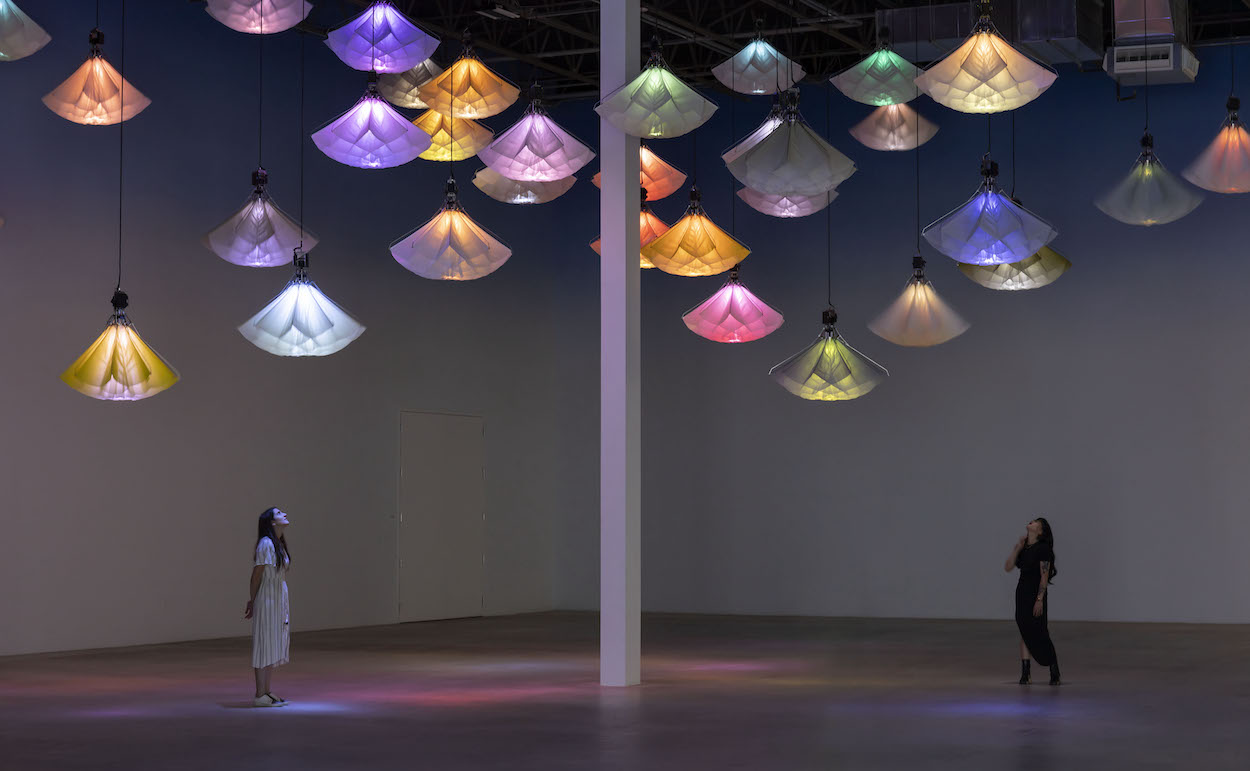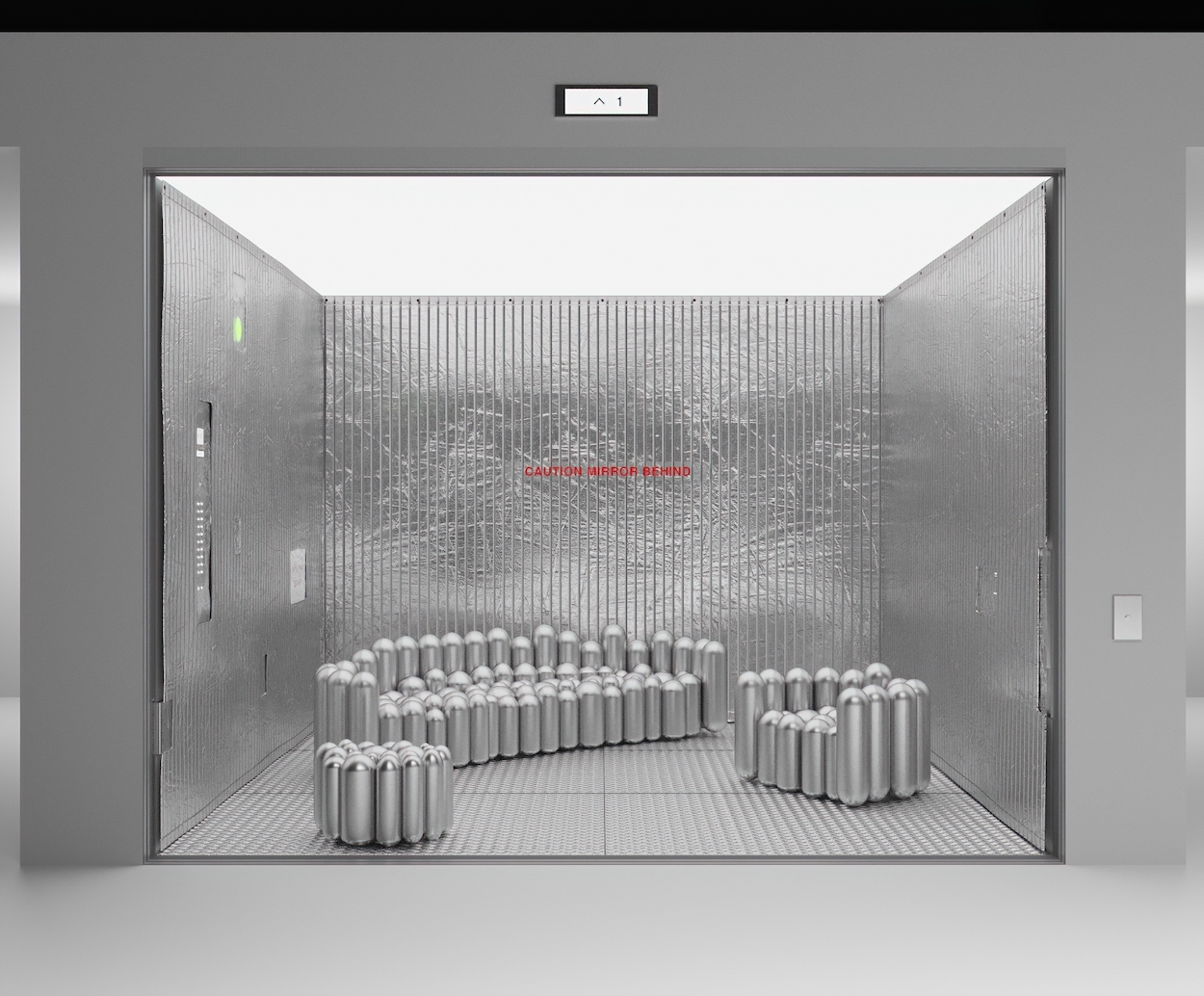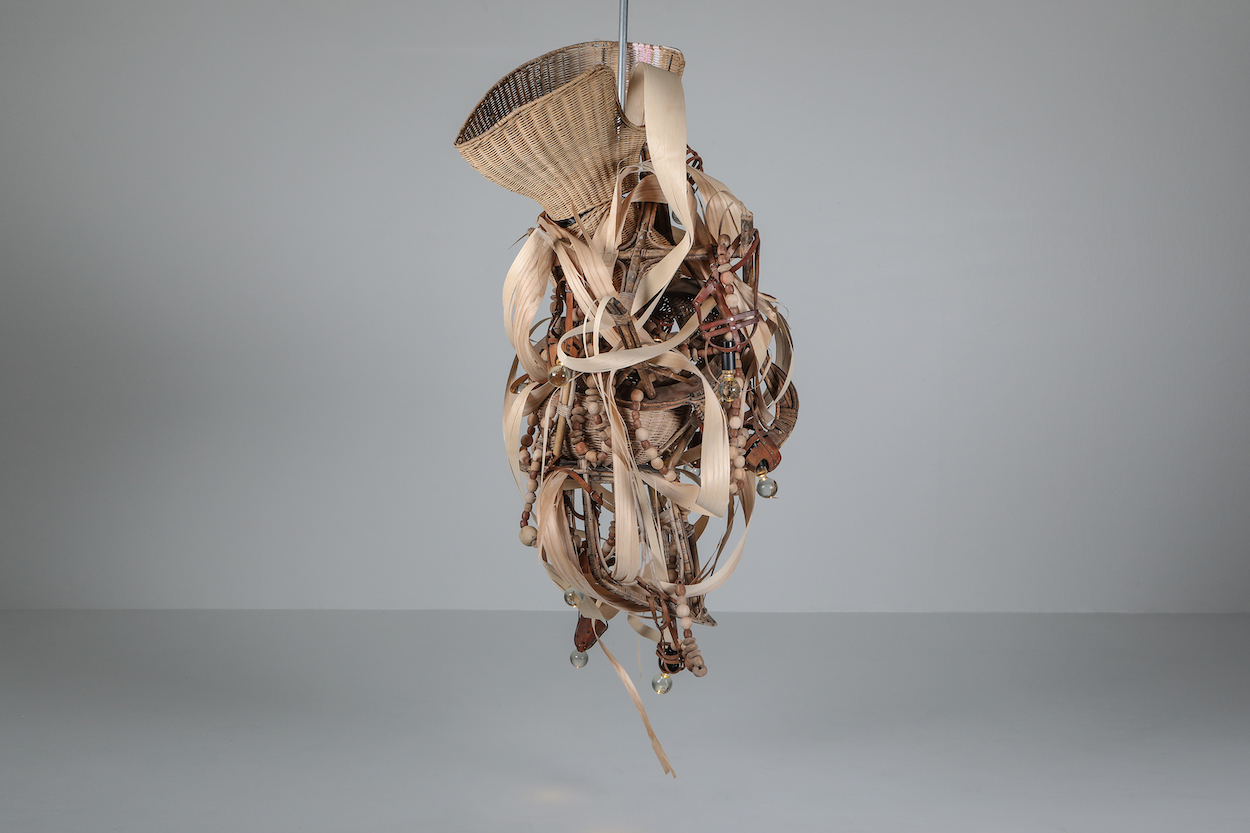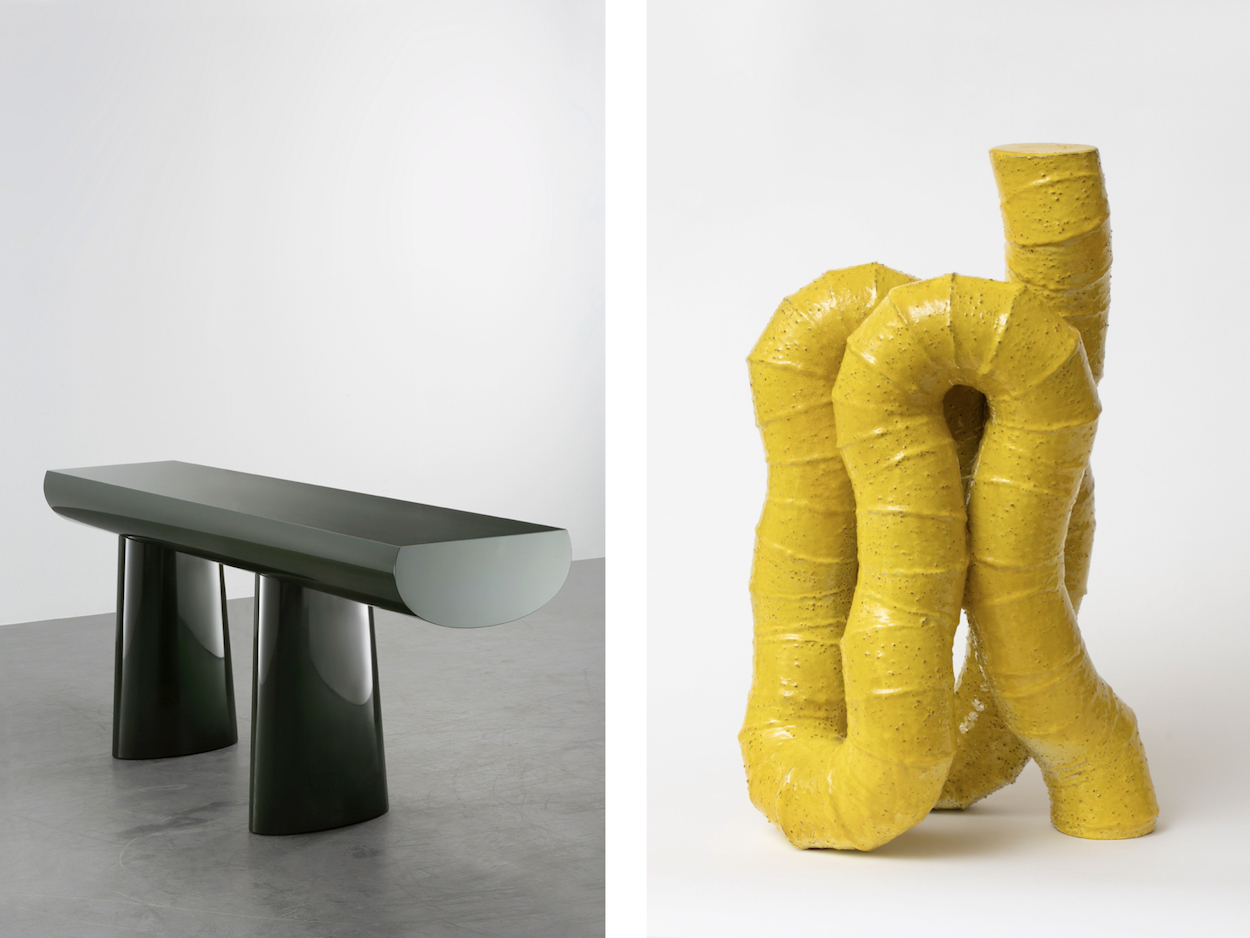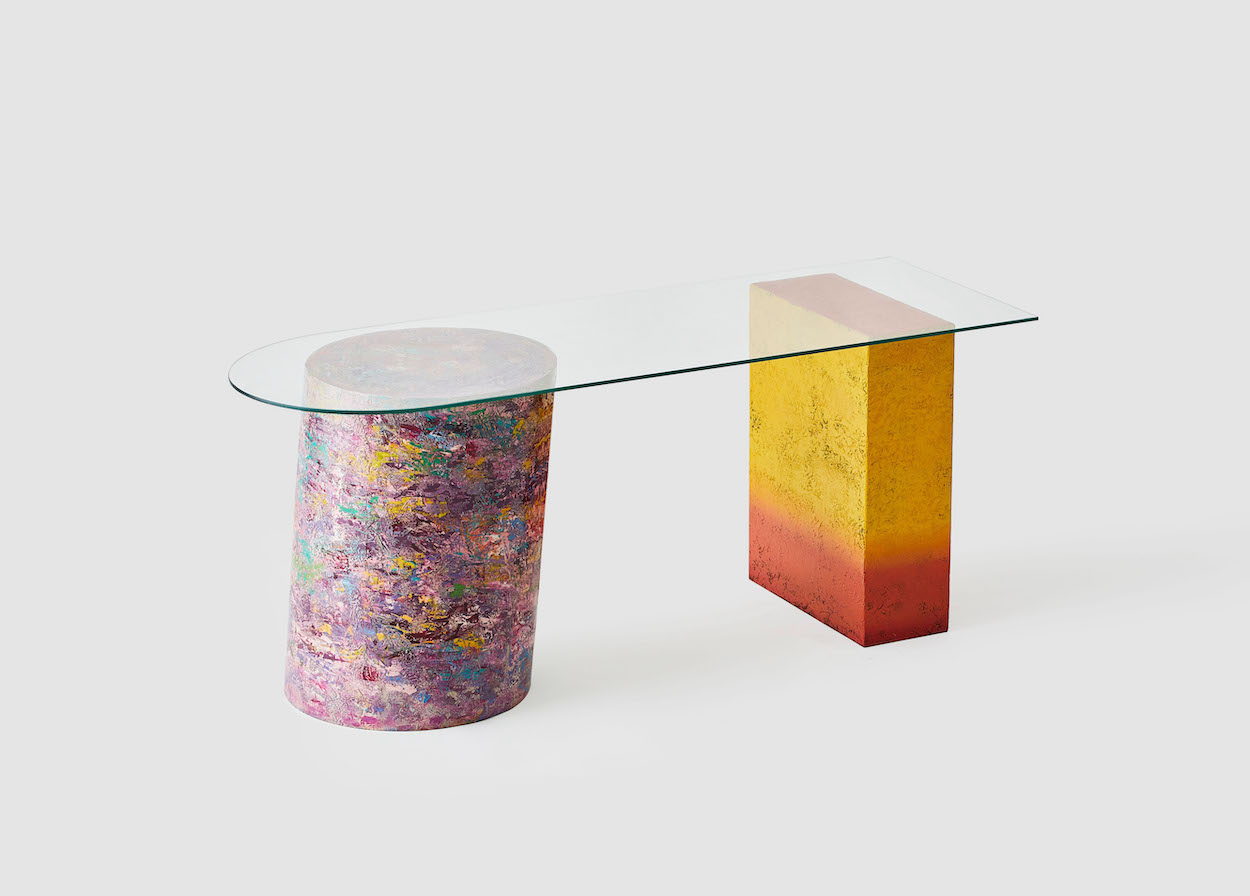How can design address the collapsing boundaries between humans and nature? It’s a question that Aric Chen, curatorial director for Design Miami/, is asking visitors to ponder as they look forward to attending the fair’s fifteenth edition in Basel, Switzerland. Slated to open on September 21, the collectible design fair has emerged practically unscathed from a tumultuous pandemic year that saw a multitude of art and design events cancel their physical editions in favor of virtual experiences that often failed to replicate the energy and enthusiasm of in-person gatherings. The fair’s theme of “human nature” seems timely as humanity reacquaints itself with the outdoors after a year of quarantine, while also grappling with environmental devastation and the ever-worsening effects of climate change.
Thankfully, Design Miami/ is positioned to deliver on that ambitious concept. One highlight comes courtesy of a new partnership with Superblue, the buzzed-about experiential art venture that stepped onto Miami’s cultural scene with retina-widening digital environments by James Turrell, Es Devlin, and TeamLab. At Design Miami/, Superblue will present Shylights, a multi-sensory experience by DRIFT, the Amsterdam-based artist duo Ralph Nauta and Lonneke Gordijn. It transforms the expansive downstairs space into a poetic, upside-down forest of moving flowers that evokes the impermanence—and sense of wonder—of experiencing nature by mimicking the process of nyctinasty, the cyclic movement of plants in response to the arrival of dusk or dawn. Collective yoga and meditation sessions will ensue underneath.
Elsewhere at the fair, a number of gallery newcomers are spotlighting obscure works by design greats. The Geneva-based Bailly Gallery, for example, will present Madoura ceramics by Pablo Picasso in dialogue with art objects and furniture signed by Diego and Alberto Giacometti. Furniture, lighting, and ceramics by masters such as Gio Ponti, Osvaldo Borsani, and Paul Laszlo—all of which demonstrate similar approach to form and function—headline the Swiss gallery Angela Weber Möbel’s anticipated Design Miami/ debut. George Nakashima gets his due at Geoffrey Diner gallery, which presents the late woodworker’s impressive Reception House table and chairs that he adapted for his wide-reaching Altars of Peace project.
Of course, it wouldn’t be Design Miami/ without an array of contemporary statement pieces. We’re particularly excited about the Black Hole Mirror by Atelier Van Asseldonk, a never-before-seen piece commissioned exclusively for the fair that took more than seven months to realize. It’s crafted from more than 600 individual pieces of mirror that capture and reflect light in compelling ways, seamlessly toeing the line between form and function. Etage Projects is also one to watch—the gallery will unveil new works by bahraini—danish, a design collective established in Bahrain by architects Batool Alshaikh, Maitham Almubarak, and Christian Vennerstrøm Jensen that explores how cultural differences can be used as a means to create. In the Curio program, be on the lookout for new work by Harry Nuriev and the debut of Carpenters Workshop Jewelry.
For those who can’t physically attend, fear not—Design Miami/ has always excelled with digital programming. The upcoming edition continues the fair’s hybrid physical/digital event format, which it first unveiled during the pandemic to give collectors the chance to view and shop works from the show floor directly online as well as engage in digital programming, including virtual tours, talks, and more. “[We’re] looking forward to coming together again in-person in Basel, while also bringing the very best parts of our fairs to a wider audience through our new hybrid format,” says Jennifer Roberts, CEO of Design Miami/. “The galleries and partners that make Design Miami/ so exceptional are already exciting us with what they have planned, and we look forward to revealing more details soon.”
